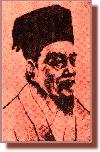 The first monographic work on forensic medicine in the world is Xiyuan Jilu (Collected Writings on the Washing Away of Wrongs), written by Song Ci of theSouthern Song Dynasty(1127-1279). It was written in 1247, and is the earliest systematic book on judicial examination in the world. Later, it was spread abroad, and was translated into English, French, Dutch, German, Korean, Japanese, and Russian as well as other languages.
The first monographic work on forensic medicine in the world is Xiyuan Jilu (Collected Writings on the Washing Away of Wrongs), written by Song Ci of theSouthern Song Dynasty(1127-1279). It was written in 1247, and is the earliest systematic book on judicial examination in the world. Later, it was spread abroad, and was translated into English, French, Dutch, German, Korean, Japanese, and Russian as well as other languages.
Chinese forensic medicine has a very long history, with examination by forensic physicians having been practiced from long ago. When Cai Yong of theHan Dynasty(206BC-220AD) explained the book Li Ji, Yueling, he defined the following terms related to injury: Injury of the skin is called shang, injury of the flesh (involving bleeding) is called chuang, and injury of the bones and muscles is called zhe. However, before the Song Dynasty (960-1279), there was no monograph especially for forensic physicians.
Song Ci was born into a bureaucratic family in Jianyang of East China'sFujian Province, and he worked as a senior judge in criminal court four times. After years of practice, he accumulated a lot of experience in administrative justice; hence based on his experience and with reference to a great amount of related data, he wrote this book.
The major contents of the book include: laws on autopsy in the Song Dynasty; methods and caution of autopsy; postmortem phenomena; different kinds of death caused by mechanical asphyxia (suffocation); different kinds of blunt and sharp instrument injuries; traffic accidents in ancient times; death caused by high temperature; poisoning; death from illness; sudden death; corpse exhumation; and so on. All these contents cover the most the central aspects of forensic pathology.
 The major achievements include the following: the appearance and distribution of cadaveric (corpse) spasm (instant stiffening of the body); the signs of corruption and the influencing conditions; the relationship between postmortem phenomena (body after death) and postmortem interval (time after death); discovery of postmortem delivery; classification of the ropes for hanging; the characteristics and influencing conditions of the ligature mark of hanging (marks form hanging); and the characteristics of strangulation and its distinction with suicidal hanging.
The major achievements include the following: the appearance and distribution of cadaveric (corpse) spasm (instant stiffening of the body); the signs of corruption and the influencing conditions; the relationship between postmortem phenomena (body after death) and postmortem interval (time after death); discovery of postmortem delivery; classification of the ropes for hanging; the characteristics and influencing conditions of the ligature mark of hanging (marks form hanging); and the characteristics of strangulation and its distinction with suicidal hanging.
Other major achievements are: findings in the corpses of drowning and in deaths caused by pressing and stuffing the mouth and the nose with other objects; findings in rose teeth related to suffocation; identification of blood clots before and after death; features of different kinds of knife wounds; injury before death and postmortem injury; the difference between suicide and homicide; determination of a fatal trauma; methods of on-the-spot investigation of different kinds of death; and so on.
